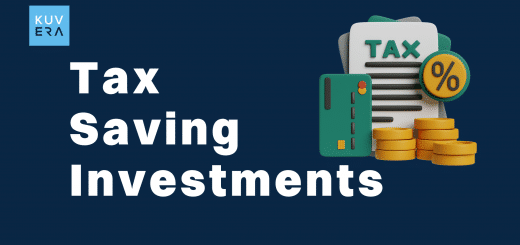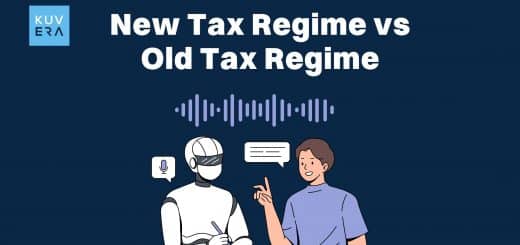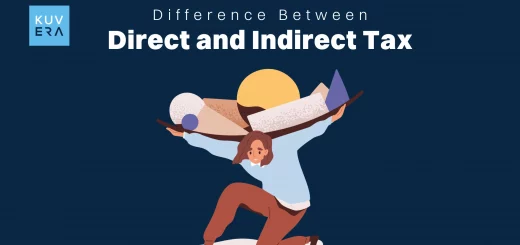
Tushar is a personal finance enthusiast who loves to write on money, savings, investments and spending. Through his writings on www.jaintushar.com, his vision is to make personal finance easy and comprehensible for his audience.
Subscribe to his blog.
The purpose of this blog post is to highlight the differences between ELSS and PPF and identifying the right investment methodology for you.
What is PPF?
Public Provident Fund or PPF is a long term investment cum tax saving instrument offered by the Ministry of Finance, Govt. of India.
The idea behind PPF is to offer a long term savings vehicle to the larger public without losing the focus on safety, returns and tax saving.
PPF is one of the most popular form of tax saving instrument under section 80C of the Income Tax and is generally used as a medium towards building a retirement corpus.
In short, consider PPF as an elephant which is stable yet slow but highly predictable.
One can open a PPF account with any post office or with selected branches of some of the commercial banks in India. That means not all banks and not all branches are authorized to accept PPF deposits.
What is ELSS?
Equity Linked Savings Scheme or ELSS is a type of equity mutual fund that invests at least 80% of its total assets in equity and equity-related financial instruments.
ELSSs have the shortest amount of lock in period (of 3 years) amongst all the available options within section 80C.
The idea behind ELSS is to incentivize the general public (by way of tax exemption) to invest in capital markets and avail and opportunity to achieve above inflation capital appreciation.
ELSS is like a tiger, it’s fast and furious, but highly unpredictable.
ELSS vs PPF: A Quick Comparision
#1 Guarantee of Returns
PPF: In case of PPF, you get a fixed rate of return per annum (and which varies from year to year). This rate is guaranteed, declared and paid by Govt. of India on 31st March of every year.
The rate of interest for the current year (2018-19) is declared as under:-
- April 2018 – June 2018 : 7.6%
- July 2018 – Sep 2018 : 7.6%
- Oct 2018 – Nov 2018 : 8.0%
- January 2019 – March 2019 : 8.0%
The interest is offered on the lowest balance between 5th and last day of every month.
That means you should make your PPF investment before 5th of a calendar month if you want yourself to qualify for that month’s interest.
The rate of interest in PPF is generally inflation linked and your adjusted rate of return (i.e. rate of return earned on PPF minus inflation) becomes very less (generally between 1 -3%).
ELSS: Since ELSS is a market linked scheme where the underlying assets are equities listed on the stock exchange, returns are neither guaranteed nor pre-defined.
Also, ELSSs earn by way of stock appreciation and declaration of dividends by companies, hence these returns are not guaranteed.
So you may earn a return of 50% on your investment in an year or you may earn a negative return as well. It purely depends on the direction which the capital markets take.
As an example, if you consider AXIS LONG TERM EQUITY ELSS, it’s return for the last year is in minus (1%). But if we consider the annualized returns over the last 3 years, that’s 12.87% year on year. Go a little more in history and the fund returns become ~20% over the last 5 years (see the fund screenshot from Kuvera).
Over the same period, PPF returned a stable return which is way less than 3Y/5Y returns of the said ELSS.

#2 Underlying Risk
PPF: Just because PPF offers a low inflation adjusted return, it doesn’t mean it’s not a good investment.
PPF is 100% safe and secure investment since it’s backed by Govt. of India and that makes it a darling of the masses.
That means your underlying principle is safe; plus you get a guaranteed interest on your money.
ELSS: ELSSs by nature are risky (better term would be volatile).
That means returns go up and down, as the underlying stocks in an ELSS portfolio move.
If the market sentiment is bearish in a particular year, you may erode your principle investment, forget about the returns.
#3: Lock in period
PPF: PPF account is opened for a period of 15 years. That makes it a ‘do and forget’ type of investment where you just put in the money and earn the declared returns.
Your investment gets locked in for that much period and you can’t use your money in between (though you may withdraw partially after completion of 6th year).
There is a provision in the law wherein you can prematurely close your PPF account after 5 years, provided the funds are required for medical treatment of a family member or for higher education.
However, that comes at an interest rate penalty of 1%.
ELSS: ELSS investments are locked in for a period of 3 years. Post that, you can withdraw your money whenever you like.
ELSS is not an ‘invest and forget’ type of investment in true sense.
If the fund in ELSS is not performing well, you have the freedom to stop investing in one ELSS and move to other one (though you can’t exit from the first fund before the end of 3 years).
As a best practice, you should monitor the performance of your ELSS every year and decide whether to continue or to shift.
Given that ELSS have the lowest lock in period amongst all the section 80C investment options, it has gained lot of popularity and acceptance in the past few years.
#4 Min / Max Investment
PPF: You need to invest a minimum amount of Rs. 500 per year and can invest a maximum of Rs. 1,50,000 per year in your PPF account.
The account gets deactivated if you don’t invest minimum amount in your PPF account in a financial year.
Also, you can open only 1 PPF account which gets matured at the end of 15 years.
You can extend your PPF account in blocks of 5 years after the initial period of 15 years is over.
There is no limit to the number of extensions you make to your PPF account.
ELSS: The minimum investment requirement to invest in an ELSS is 500 per annum and there is no upper limit to the amount invested.
However, just like PPF, tax exemption is available only on Rs. 1,50,000 annually.
You can invest in as many ELSS schemes you want (though one or max two funds are more than enough).
#5 Tax treatment
PPF: PPF falls in the category of Exempt – Exempt – Exempt (EEE).
That means your investment (to the tune of maximum Rs. 1,50,000 annually) qualifies for an exemption, the interest earned during the accumulation phase is exempted and finally, the maturity amount at the time of withdrawal is also tax free.
ELSS: ELSS falls in the category of Exempt – Exempt – Tax (EET).
That means your investment qualifies for an exemption (to the tune of maximum Rs. 1,50,000 annually) and the returns during the accumulation phase are exempted.
However, the maturity amount is subject to LTCG (Long Term Capital Gains) to the tune of 10%, if your returns are higher than 1 lacs.
Just because the returns are taxed doesn’t mean PPF ranks over ELSS.
If we take the data of last 15 years, even after taxation, the returns from ELSS are way higher than that from the PPF.
So which is better: PPF or ELSS?
Both PPF and ELSS are great investment vehicles as well as tax saving options under section 80 C. As a result, both should play a decisive role in your portfolio.
PPF brings in the security and stability in the form of guaranteed returns while ELSS ensures you are exposed to equities which work as a tool for wealth multiplication.
Hence, both PPF and ELSS are equally good options and they should be an integral part of your tax saving and investment strategy.
Tushar Recommends
If you are confused how much to invest across PPF and ELSS, follow a simple rule.
Identify the amount that you want to invest under section 80C (after accounting for your Provident Fund & premium towards insurance policies.My suggestion would be to consume the complete Rs.1,50,000 of Sec 80 C limit, in case your pocket allows).
From the amount you have identified in the above step , invest 2/3rd of it in PPF and the remaining 1/3rd in ELSS. That’s what I do (you can fine tune this ratio based on the quantum of exposure you have towards equities outside of Sec 80C).
The logic is to ensure safety of your 2/3rd of the principal amount while risking the other 1/3rd in ELSS. Since I invest in other direct mutual funds which are not tax saving, this 1/3rd allocation towards ELSS suits me the best.
Also, as mentioned earlier, it’s best to invest in PPF right at the start of the financial year (in April) so that you earn interest for the entire year.
For ELSS, it’s best to invest via SIPs and that too in Direct Mutual fund option.
You can opt for Kuvera to invest in ELSS, that too for free.
Conclusion
Don’t fall in the trap of ELSS vs. PPF.
Both are equally important and should be a part of your financial plan.
Decide the percentage allocation that makes you comfortable and then stick to it.
Important is to maintain the discipline towards investing rather than losing your sleep over deciding the percentage allocation or absolute comparison of these instruments.
Find Top Rated Tax Saving Mutual Fund schemes.
Start investing through a platform that brings goal planning and investing to your fingertips. Visit kuvera.in to discover Direct Plans and start investing today.
#MutualFundSahiHai, #KuveraSabseSahiHai!










